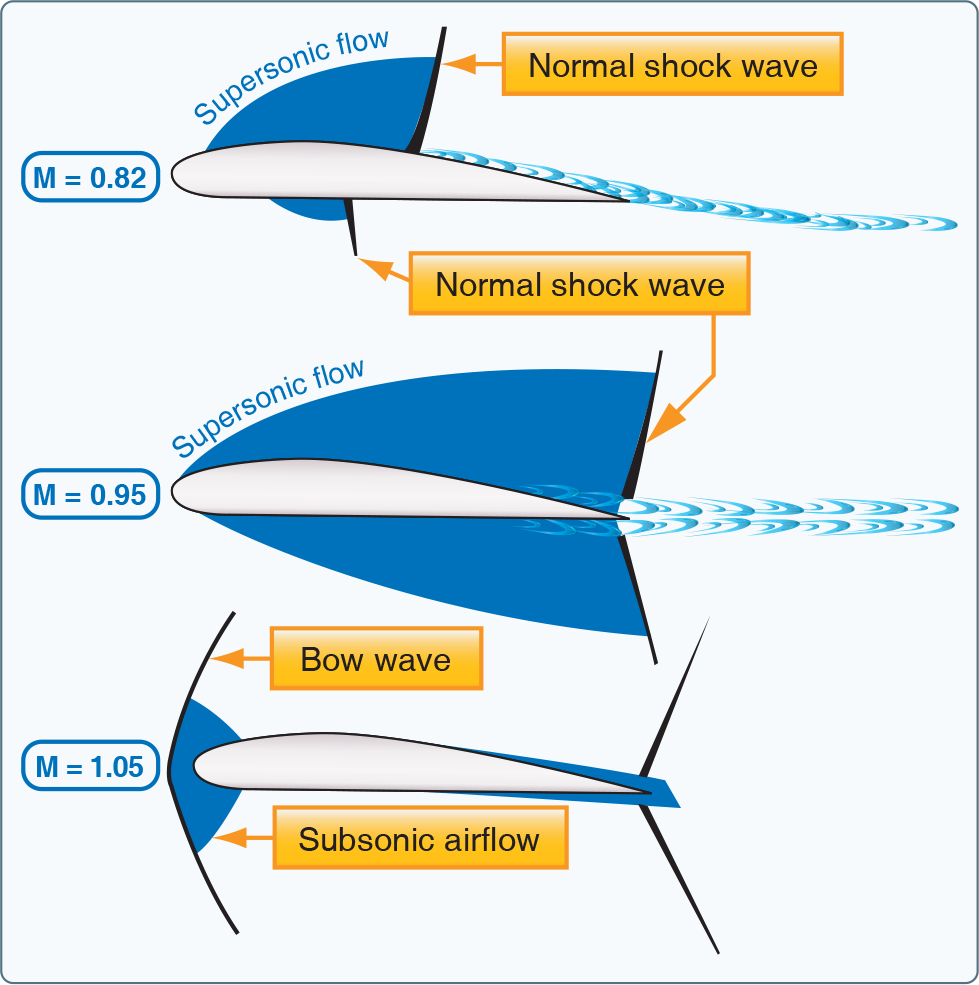Critical Mach Number
The critical Mach number, or MCRIT, is the lowest Mach number at which airflow over some part of an aircraft first reaches the speed of sound, even though the aircraft itself is still flying at a subsonic speed. When the airflow slows back down to subsonic speeds, a normal shock wave forms, causing a sudden rise in pressure and temperature. Initially, this shock wave is weak, but as the Mach number increases beyond MCRIT it strengthens and moves rearward along the wing.
The formation of a shock wave leads to increased drag and can cause boundary layer separation, resulting in turbulent airflow and a reduction in lift. As the Mach number increases further, drag increases significantly due to the presence of these shock waves, leading to a sharp rise in aerodynamic resistance known as wave drag.

This drag increase is relatively minor at MCRIT itself but becomes much more pronounced as the aircraft approaches the drag divergence Mach number, which is slightly higher than MCRIT.
When an aircraft travels faster than the speed of sound (Mach 1), it moves through the air at a velocity greater than the speed at which pressure disturbances (such as sound waves) can propagate. Because of this, the airflow does not have time to move smoothly around the aircraft as it does in subsonic or transonic flight. Instead, the air is compressed abruptly, creating a bow shock wave.
A bow shock forms when the supersonic flow ahead of an aircraft is forced to slow down and compress as it encounters the leading surfaces of the aircraft, such as the nose or the leading edge of a wing. Unlike shock waves that form on wings or control surfaces at transonic speeds, a bow shock stands ahead of the aircraft rather than being attached directly to its structure. This is because the air cannot gradually move around the aircraft; instead, it is forced to change direction and slow down instantaneously, leading to a sudden increase in pressure, density, and temperature.
The shape and position of the bow shock depend on the aircraft’s speed and design. At just above Mach 1, the bow shock is relatively weak and positioned close to the aircraft’s nose. As the speed increases well beyond Mach 1, particularly into the high-supersonic regime, the bow shock becomes increasingly detached and forms at a greater distance in front of the aircraft. The faster the aircraft travels, the more oblique (angled) the shock wave becomes.
